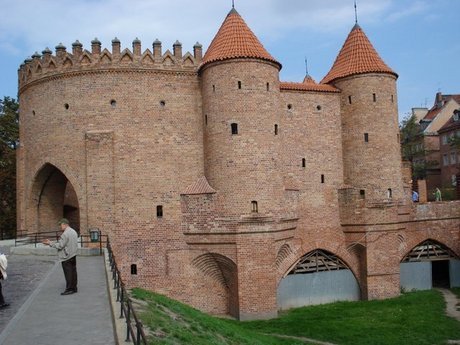Warsaw Barbican
Barbican is the oldest part of the city’s fortifications. It was built in 1548 by the Venetian Giovanni Battista. It used to be an important element of defensive city walls. Its present form is a result of restoration works finished in 1954. Barbican is a round construction, reinforced with four defensive towers. Barbican is today the site of summer art gallery where artists sell their works.
The Warsaw Barbican served as a fortified outpost for many years since being built in the mid-16th century. A classical Gothic structure separating both the Old Town district from the New Town, the Barbican is a major highlight in this part of the city and during the summer months, many visitors head here for the market, live music and plentiful supply of Polish beer.
The barbican had the form of a three-level semicircular bastion manned by fusiliers. It was 14 meters wide and 15 meters high from the bottom of the moat, which surrounded the city walls, and extended 30 meters from the external walls.
Almost immediately after its inception, the 4-tower barbican became an anachronism serving virtually no practical purpose. This was largely a result of the rapid advancement in artillery power. It was used in the defense of the city only once, during the Swedish invasion of Poland, on 30 June 1656, when it had to be recaptured by the Polish army of Polish king Jan Kazimierz from the Swedes.




